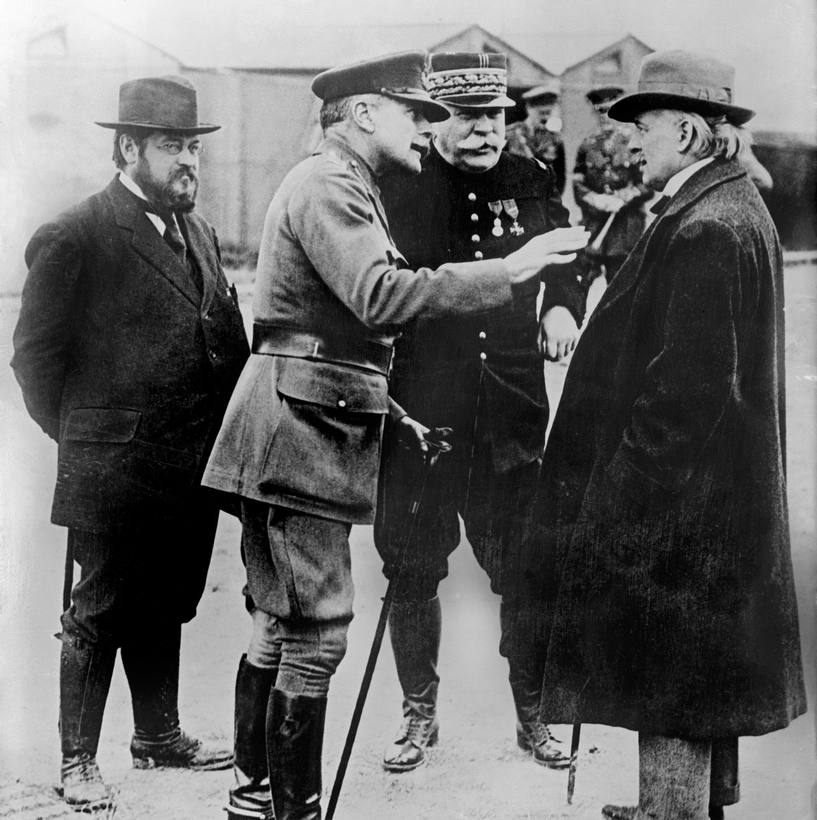In November 1918 the long agony of Europe’s armies ended with an armistice. A chaplain, close friend of Field Marshal Sir Douglas Haig, marveled at how little altered by the experience was the British commander-in-chief. “I noted how fresh he looked … still lithe and vigorous, and I reflected how well he had stood up to the strain of those terrible years.”
Haig’s durability contrasted with the condition of other warlords of all nationalities who had suffered nervous collapses. The most recent such casualty was Erich Ludendorff, shattered by the defeat of his March 1918 offensive, the last German cast of the dice.
A sceptic might say, as did the British prime minister David Lloyd George, that Haig’s Roman fortitude exposed his alienation from humankind. Perhaps such detachment — matched by that of Soviet commanders in the Second World War, amid even more ghastly losses — was essential for them to play their roles. How could a normal being have consigned hundreds of thousands of men to battle and death, again and again, in pursuit of a breakthrough that, precedent and reason insisted, was unattainable?
Nick Lloyd teaches military history at King’s College London and is the author of several well-received accounts of First World War battles. He has now composed a narrative of the entire conflict on the Western Front, intended as the first of three volumes embracing the global war.
“I noted how fresh he looked … still lithe and vigorous, and I reflected how well he had stood up to the strain of those terrible years.”
Early passages focus on the French experience. Until 1916, and the exhaustion of Marshal Joseph Joffre’s army in sustaining the stalemate at Verdun, France bore the Allies’ overwhelming burden. British leaders were frustrated by the struggle’s intractability. Some yearned for an escape route, pursuing the mirage of victory gained elsewhere. Winston Churchill led the charge to the disastrous Dardanelles campaign, against the Turks.
The book describes a telling moment in September 1915: Haig, still a mere subordinate army commander, was visited by his predecessor as British C-in-C, Sir John French, “now a melancholic shadow of his former self”. Haig wrote: “He seemed tired of the war, and said that in his opinion we ought to take the first opportunity of concluding peace otherwise England would be ruined!”
In the eyes of the ambitious Haig, this defeatist attitude exposed French’s unfitness for retaining command. The Scottish whisky heir indeed supplanted the choleric little Irishman four months later. In one important respect Haig was indeed right and French wrong: until the winter of 1918 the only “peace” on offer was surrender to Berlin’s demands, essentially for dominance of Europe.
When Germany’s chancellor Theobald von Bethmann-Hollweg in 1917 belatedly accepted the need to seek a compromise settlement, he was displaced by the military dictatorship of Paul von Hindenburg and Ludendorff, still committed to victory. When the Russians quit the war, the savage terms they imposed on the Bolsheviks in the treaty of Brest-Litovsk showed what France and Britain could expect if they surrendered.
The difficulties of restoring peace do not, however, justify the murderous, unsuccessful offensives launched by Allied commanders. Between 1915 and the end, one side or the other repeatedly achieved a local success, only to find that the limitations of mobility and communications made it possible for defenders to close breaches more quickly than attackers could exploit them.
The difficulties of restoring peace do not justify the murderous, unsuccessful offensives launched by Allied commanders.
Many writers, starting with John Terraine in 1963, have sought to rehabilitate the First World War’s Allied generals. Lloyd in some measure follows them, rejecting the cruel epithet “donkeys” popularised by Alan Clark. Yet how else can one characterise such a man as Sir William Robertson, head of the British army? He wrote to Haig amid his disastrous October 1917 Passchendaele offensive: “You are getting on splendidly, and your forecasts as to the cumulative effect of your efforts are proving well founded. One would think that the fine successes you are winning would suffice to satisfy [the politicians], but it is not so apparently … It is a hard war — not because of the Boche, but because of these people here.”
Lloyd is excellent on detail, especially about the Americans’ participation. Although they formally entered the war in April 1917, their units scarcely fired a shot until spring of the next year because of Washington’s insistence that they should not be thrown into the struggle piecemeal.
France’s Marshal Ferdinand Foch, belatedly appointed Allied supreme commander in the spring of 1918, was probably the only outstanding Allied high commander, although Joffre had a finest hour at the Marne, in September 1914. Among Haig’s subordinates, Herbert Plumer and Edmund Allenby stand out.
Lloyd is surely right that the war’s outcome had to be decided on the Western Front. He has composed an admirably clear and judicious narrative of the battlefield course of events, in all its hideous repetitiveness. The story changed only in the summer of 1918, when German exhaustion enabled Haig’s armies to claim an indisputable, but joyless because tardy and prodigiously costly, victory.
Lloyd’s book will be cherished by military history buffs. It may not, however, satisfy those who seek to study the past in a wider context. Most 21st-century historians recognize the importance of social, political and above all economic forces, which are scarcely discussed here. The book is short on novelty and big ideas. If war is too important to be left to the generals, the best modern war history ranges far beyond their headquarters.
Sir Max Hastings is the author of several works of history, a columnist for The Times of London, and a former editor for The Telegraph


